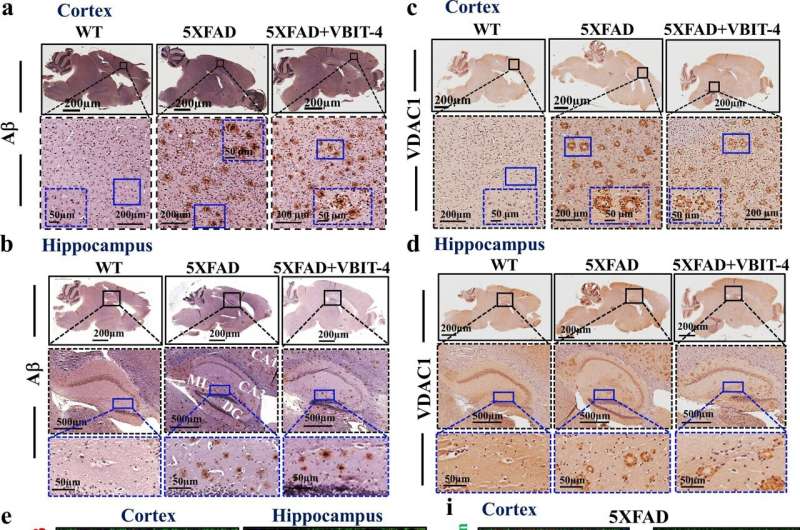This article has been reviewed according to Science X'seditorial processandpolicies.Editorshave highlighted the following attributes while ensuring the content's credibility:
fact-checked
trusted source
proofread
New approach for treating Alzheimer's shows success in mouse models

The growing number of Alzheimer's disease (AD) cases, projected to reach 135 million by 2050, highlights the urgent need for effective therapeutics. Accumulated evidence points to an impairment of the metabolic mechanism in Alzheimer's patients that develops several decades before the onset of dementia and deterioration of cognitive function. Reduced metabolism results from a dysfunction of the mitochondria, which is responsible for producing most of the energy in the cell but is also involved in cell death, inflammation and immune response.
Despite the disease being linked tomitochondrial dysfunction, currently, no drug candidates have targeted this aspect. Researchers at Ben-Gurion University of the Negev are proposing a new treatment approach by targeting the mitochondrial gatekeeper, the voltage-dependent anion channel-1 (VDAC1), which controls mitochondrial activity and controls cell life and death.
The new proposed target and therapy demonstrated significant improvement across multiple parameters in mouse models, as reported in the journalTranslational Neurodegeneration.
VDAC1 plays a crucial role in thecell deathprocess mediated by mitochondria, which is why the team of researchers led by Prof. Varda Shoshan-Barmatz chose to focus their efforts on the dysfunction of the mitochondria in a mouse model for Alzheimer's disease as a target for treatment.
Prof. Shoshan-Barmatz's research showed that an increase in the amount of the VDAC1 protein in the cell leads to its organization as a ring, with a large channel through which death-factor proteins and mitochondrial DNA exit, causing cell death and an immune response, respectively. A high increase in VDAC1 levels has been found in heart diseases, intestinal diseases (Crohn's), autoimmune diseases (lupus) and others. Here, the researchers show that the protein is produced in huge levels in the brain of a mouse model for Alzheimer's disease and is concentrated in the nerve cells around the plaque, leading to their death.
Prof. Shoshan-Barmatz has developed a small molecule, VBIT-4, that binds to VDAC1 and prevents the pathophysiological changes associated with Alzheimer's. VBIT-4, a molecule that can cross theblood-brain barrier(BBB), was able to prevent the pathophysiological changes associated with Alzheimer's disease, such as neuronal cell death, neuroinflammation and neuro-metabolic dysfunctions. Additionally, it also induced a neuroprotective phenotype in astrocytes and microglia, which are normally pro-inflammatory and neurotoxic.
This means that not only did the treatment protect against degeneration, it also promoted the healthy growth and normal functioning of neurons. Furthermore, the therapy also prevented decline of cognitive skills such as learning and memory in the mice.
Interestingly, the protective effects were achieved without significantly reducing Tau or amyloid (Aβ) plaques, which are commonly believed to be the main causes of Alzheimer's. This suggests that the Aβ-cascade hypothesis, which posits that these elements are the primary cause of the disease, may not accurately reflect the underlying cause of Alzheimer'sdisease.
"Targeting VDAC1 with a novel molecule we developed presents an innovative approach to Alzheimer's treatment, and can even be used as a preventive treatment," said lead author Prof. Shoshan-Barmatz.
更多的信息:Ankit Verma et al, Targeting the overexpressed mitochondrial protein VDAC1 in a mouse model of Alzheimer's disease protects against mitochondrial dysfunction and mitigates brain pathology,Translational Neurodegeneration(2022).DOI: 10.1186/s40035-022-00329-7

















